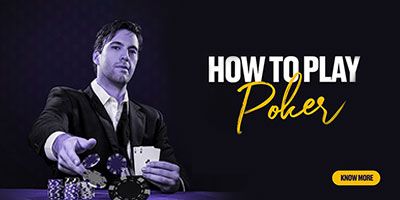What is Poker?
In poker, you play with a deck of cards, the same deck used for games like rummy and teen patti. In this game, you will be dealt cards, and there will be several different rounds where you participate by placing some sort of stake. You will have hole cards, which are cards dealt to you, and community cards, which the dealer places in the centre. To have a chance at winning, you need to make a valid poker hand using your hole cards and the community cards. Based on the hand you hold, you will place a stake, and the player with the best poker hand among all the players will win the amount collected in the pot.
How to Play Poker?
Learning poker is easy. But have you ever wondered why not everyone wins at poker? The reason is that poker is a skill-based card game. You may be able to memorize the rules quickly, but mastering the game requires regular practice. So, the first thing you should do is learn the rules of poker. Once you are familiar with the game rules, you can start playing real poker games and pick up valuable tips and tricks from more experienced players.
Now, let's take a look at the poker rulebook below to understand how to play poker. After that, we'll delve into the intricacies of betting and poker strategy, showing you how to act like a pro. We will also explore different poker variations to expand your knowledge and skills in the game.
Let us see how to play poker with the poker rulebook below, and then dive into the details of betting and poker strategy, how to act like a pro, and also learn some poker variations.
-
Poker Rulebook
What is the first thing that you need to know for playing poker? The first thing that you need to know from the poker guide is the poker hand rankings.
Listed Below are the Ten Hand Rankings from Highest to Lowest:
- Royal Flush.
- Straight Flush.
- Four of a Kind.
- Straight.
- Flush.
- Full House.
- Three of a Kind.
- Two Pair.
- One Pair.
- High Card.
Before we get into each of the ten poker hands in detail, let us understand what is a poker hand?
Meaning of Poker Hand
Typically, five cards make a poker hand.
- Suppose if you have the cards 5-6-7-8-9 in random suits, then the poker hand that you have made is straight.
- Suppose if you get ♥3 ♥7 ♥9 ♥Q ♥A, then you make a flush.
If you observe the second example, you can see that all the cards have the same suit. That is the heart's suit (♥).
Every combination of five cards in poker is given a name such as royal flush, straight, two pair, and so on. This five-card combination is called the ‘poker hand’. There are ten poker hands. Find out their rankings below.
Rule 1: Poker Hand Rankings
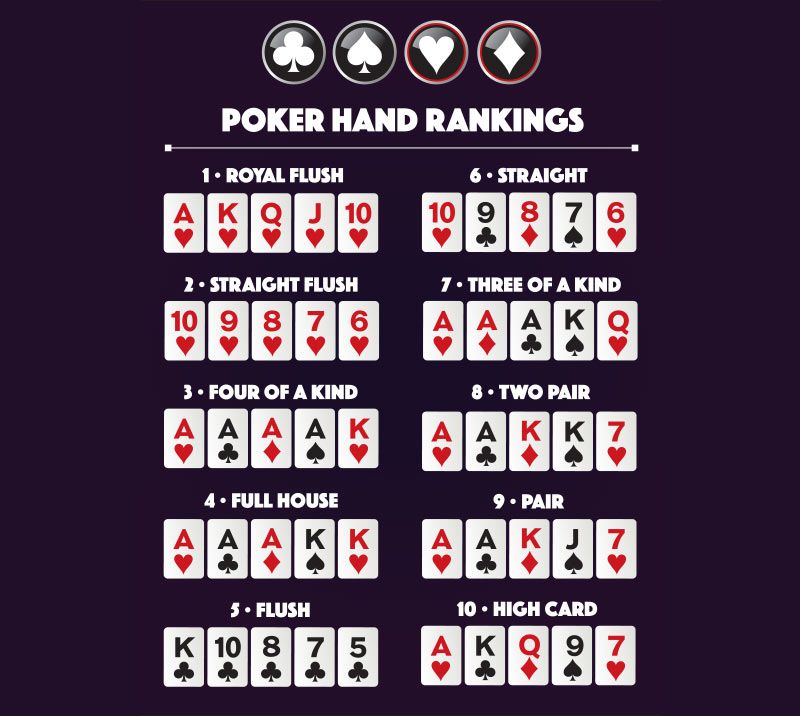
Now let us look at the other set of rules.
How Does a Poker Game Begin?
Let's take the example of Texas Hold'em Poker, which happens to be the most popular poker game worldwide. You will now learn how to play poker by following the rules provided below.
Rule 2: Place the Blinds or Place the Ante on the Poker Table
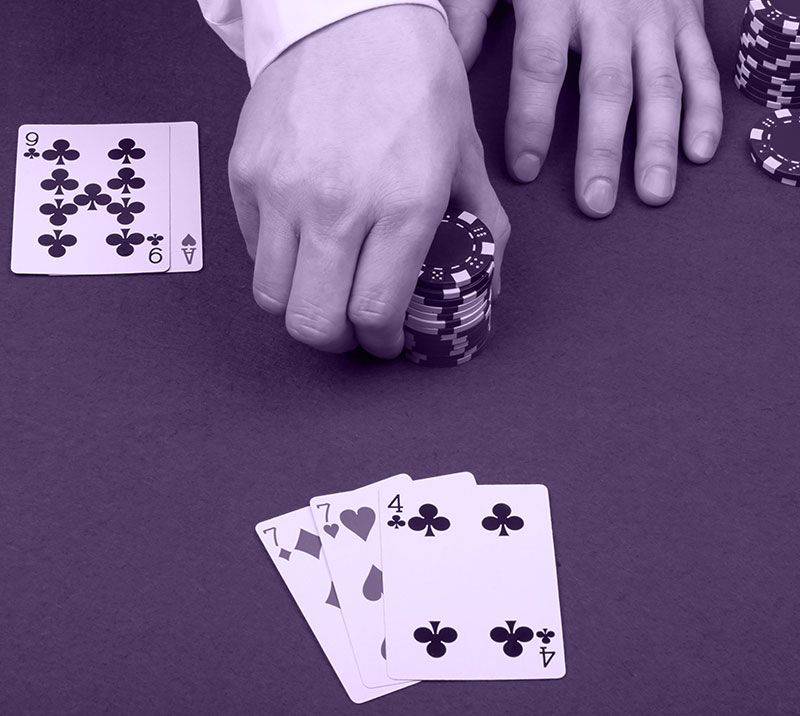
Let us first understand what blinds are and how they are placed, followed by what are antes.
What are Blinds?
To start a poker game, two players sitting to the left of the dealer must put an initial amount known as blinds.
Types of Blinds
Two types of blinds exist. They are the small blind and big blind. The person sitting to the immediate left of the dealer puts a small blind and the player to the left of the small blind puts a big blind.
For example, if there are 6 players on a poker table in a game of Texas Hold’em. The first player to the left of the dealer is the small blind, and the player to the left of the small blind is the big blind.

Check cards Dealt
Bet, call or raise after each round is dealt if you want to.
- Look at the “flop” to see if you have a good hand.
- Check the “turn” card after the second round of betting.
- Examine the "river" card and decide on the hand you'll play.
- Reveal each player’s hand clockwise in the final “showdown.”

How Is the Game Fair If Only Two Players Place a Blind and The Rest of The Players Stake Directly?
To ensure fairness, the responsibility of placing the small and big blind rotates among the players in every round. Let's consider an example with six players in a game of Texas Hold'em poker. Players A, B, C, D, E, and F are participating.
- If player A is the small blind and player B is the big blind in the first round of the game.
- Then in the next round, player C will be the small blind and Player D will be the big blind.
- Following that, player E will be the small blind and player F will be the big blind. This makes the game fair and exciting.
Now Let Us Get to What are Antes
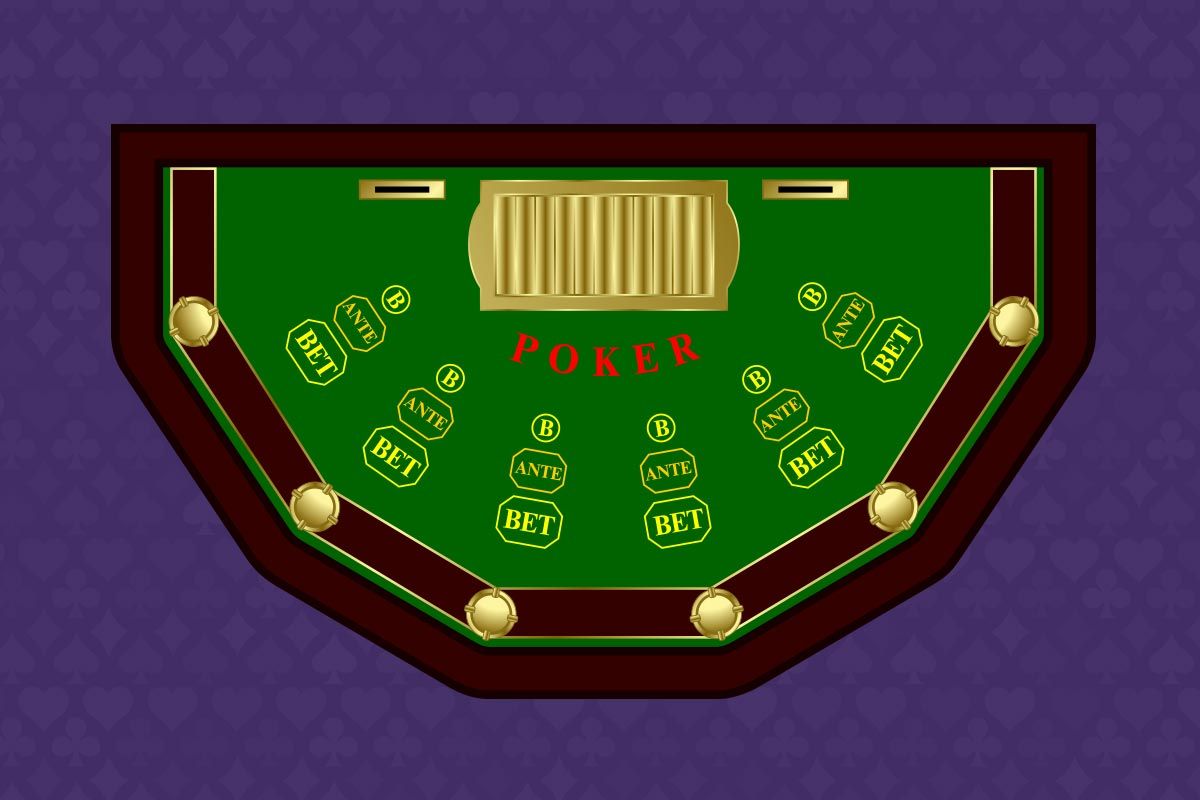
An ante is a compulsory stake that every player has to place on the table. For example, if there are six players in the game and the pre-decided ante for the game was ₹1. Then all the players must put the ante stake on the table before the cards are dealt. The betting round starts after the antes are placed on the table. The players must put antes before the beginning of every round. The player to the immediate left places the first ante and the rest of the players follow.
Difference Between Blinds and Ante
Though blinds and antes are initial stakes, and the purpose of blinds and ante is to motivate the players to stake money in the game, it is important to know that blinds and antes are different.
- The blinds are forced stakes but only the two players to the left of the dealer place it and the dealer moves one position to the left with each hand.
- In private games with friends, the antes are more common. All the players have to put the mandatory bet known as the ante.
- Blinds are popular in casino environments and big stakes.
- Typically, a poker game will either use the ante or the blinds but not at that same time.
Let us now have a look at how cards are dealt with in rule number 3. The first game that you can start playing as a beginner is texas hold ‘em. Have a look at all the rules given below to learn how to play poker texas hold em.
Rule 3: Dealing of Cards
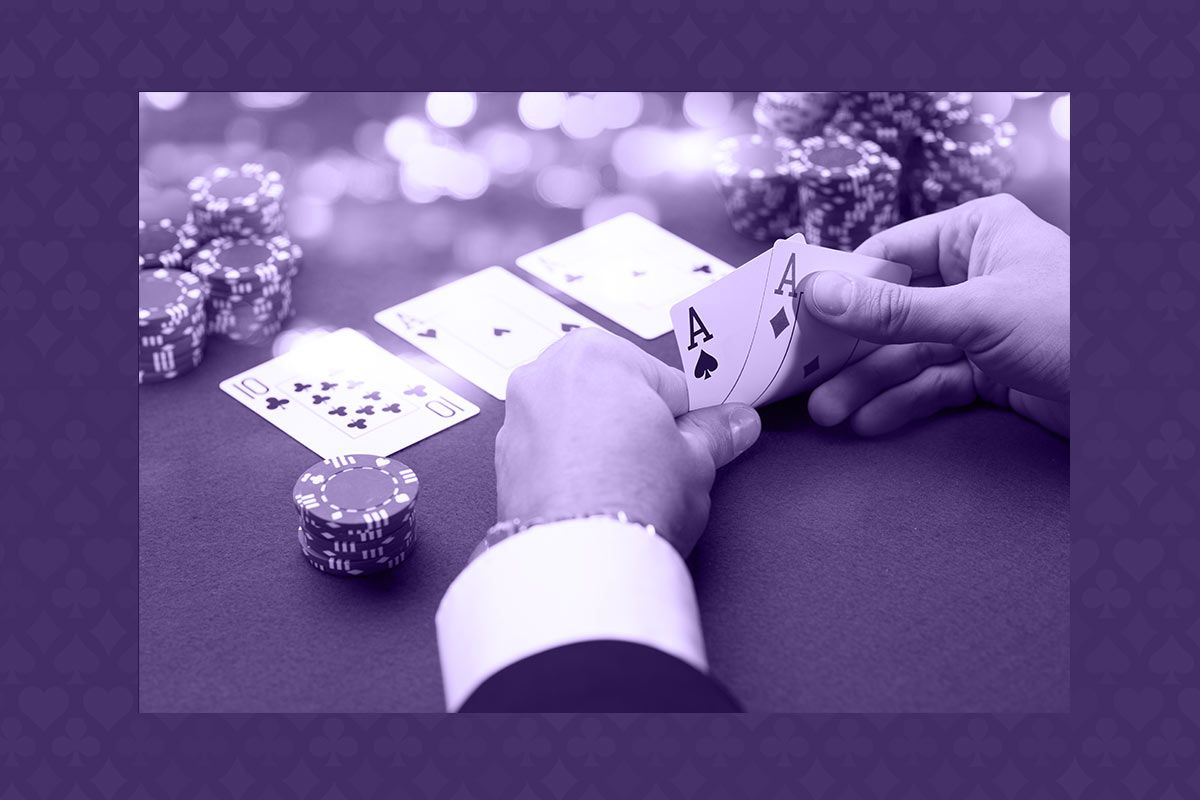
There are mainly two types of cards in poker. They are ‘hole cards’ and ‘community cards.’
What are Hole Cards?
Hole cards are the individual cards given to players. Only the individual players can see the hole cards.
What are Community Cards?
Community cards are available for all the players. They can be used to form a good poker hand.
Since we are considering texas hold’em poker, let us look at the dealing of hole cards and community cards in texas hold’em poker.
How Are the Hole Cards and Community Cards Dealt in Texas Hold’em?
- Players are dealt a total of two hole cards and five community cards in texas hold'em.
- First, the players place the small blind and big blinds on the poker table.
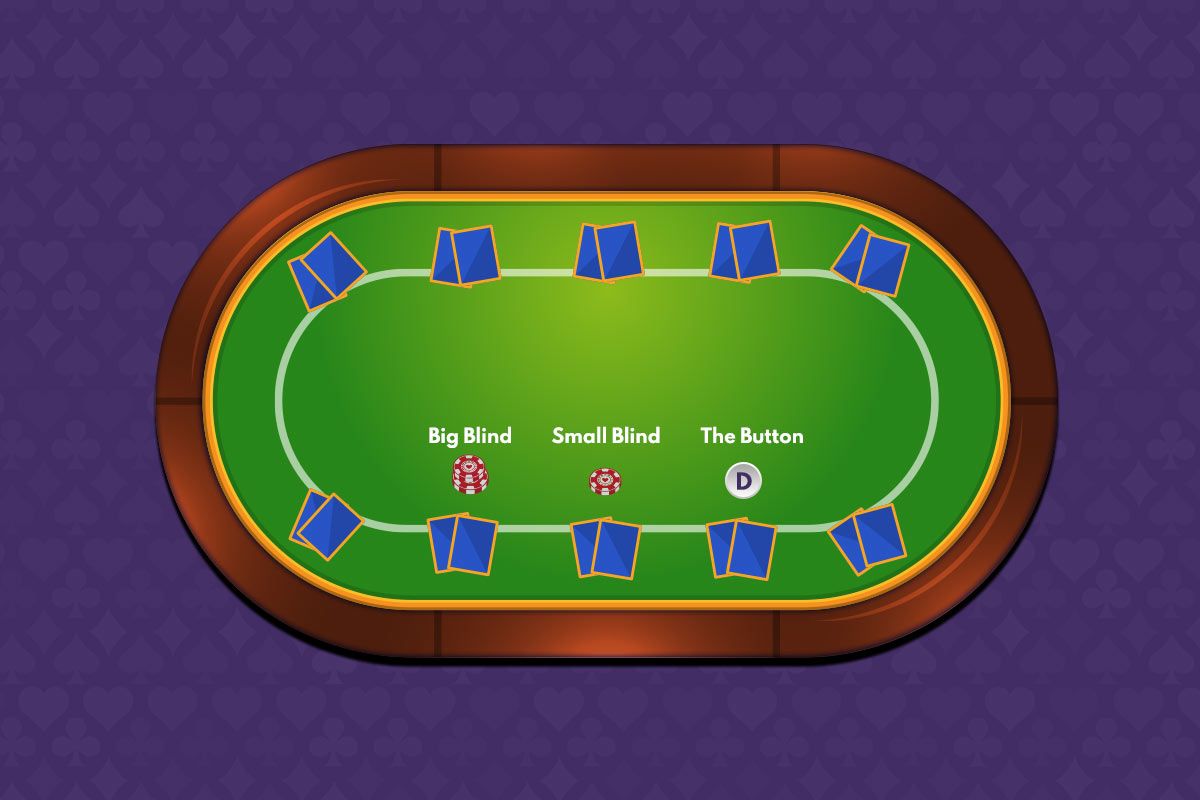
- The dealer shuffles the cards, and then ‘burns’, i.e., discards the first card in the deck.
- Then the dealer gives two cards to all the players.

- In every dealing round in poker, the dealer will burn a card.
- As a result, it is more difficult for players to predict which card will be dealt with next, and the game becomes more unpredictable.
- The dealer will always deal with the cards clockwise, starting on the left, and working his way around the table.
Tip: Until the showdown, players will not show their hands to anybody else. It is preferable to keep your cards hidden even if another player is out. You do not want them to divulge the value of your cards by mistake or on purpose.
Rule 4: Bet, Check, Call, Raise
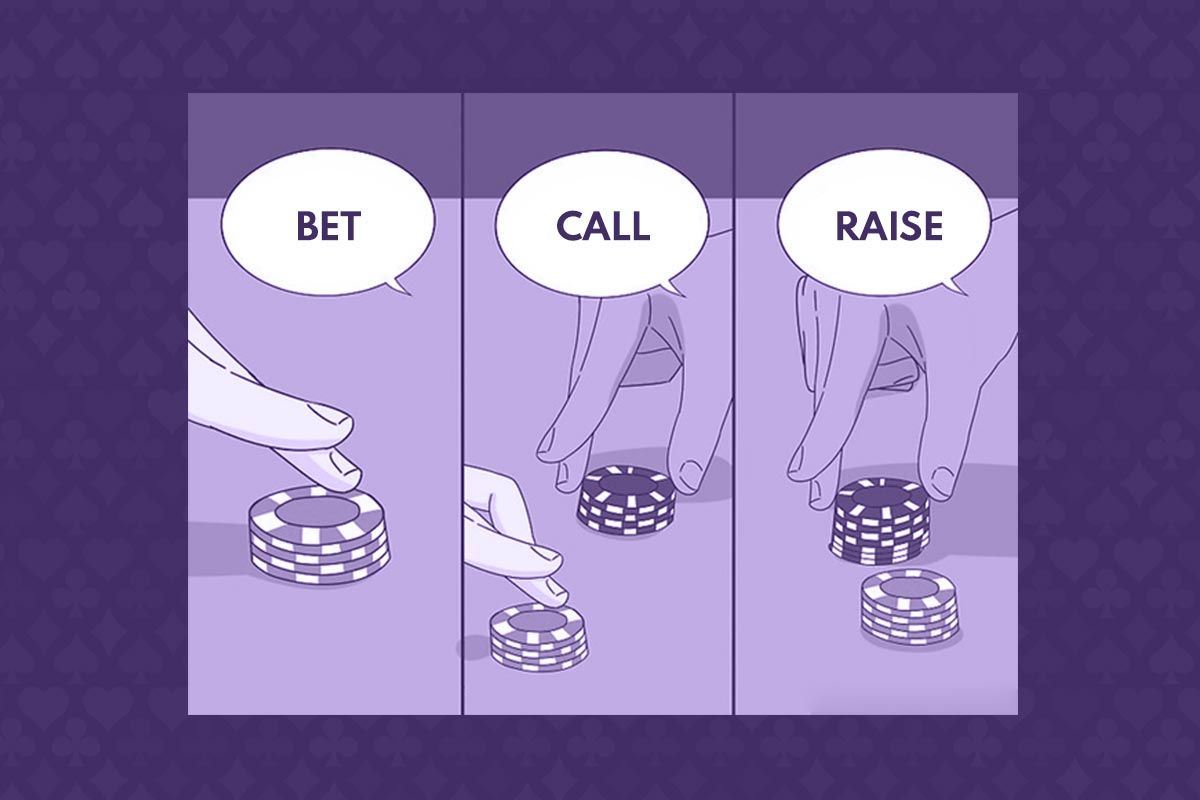
- Bet, Call, and Raise betting options for poker players.
- If you choose to, you can bet, call, or raise in each round.
- You will place a bet every time the dealer deals with new cards.
- The first bet is based only on the two cards that the players have in their hands. This is known as playing the ‘pre-flop’ round.
- Betting is done in a clockwise direction, and you have a few options when it is your turn to take the betting action.
Betting Actions
Players have the option to:
Stake: If no one else has placed a bet yet make the first wager.
Check: To avoid betting, say "check."
Call: To match a bet made by someone else, say "call."
Raise: To add more money to the betting pool, say "raise."
Fold: If you do not want to play that hand, you have the option to “fold”, that is, not playing a poker hand.
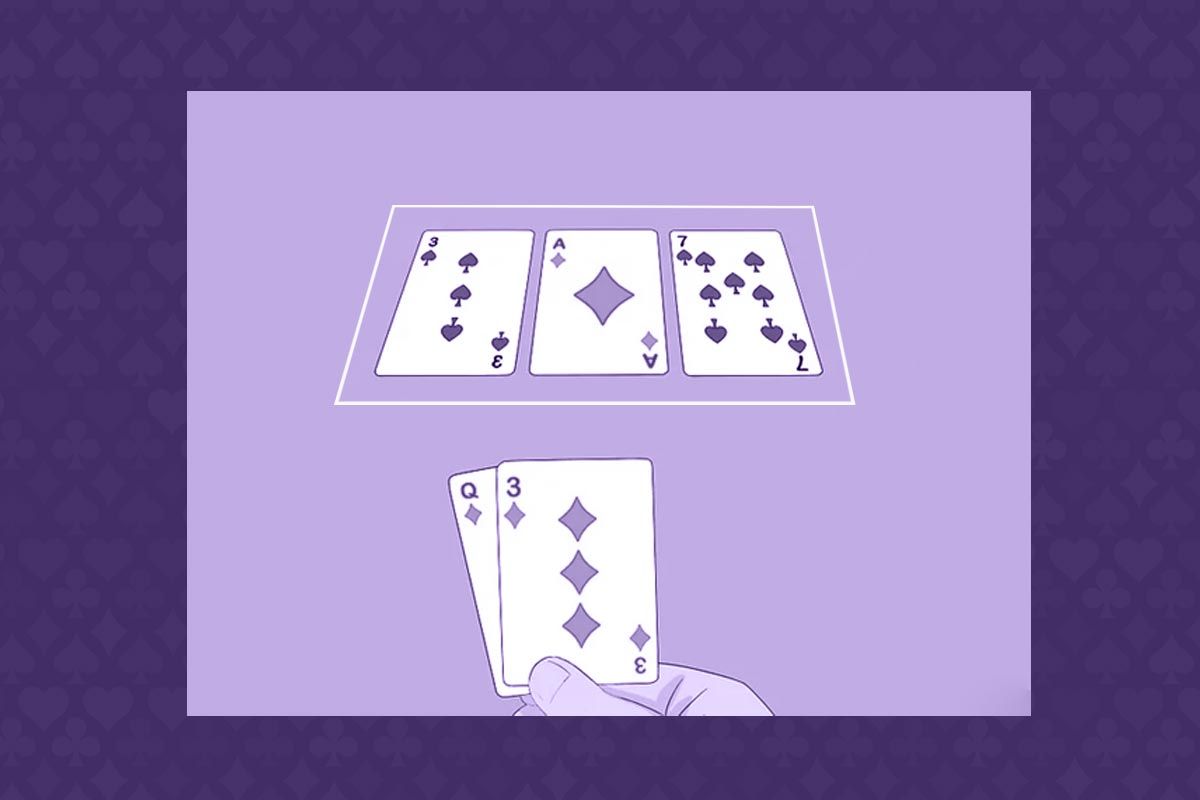
- To see if you have a decent hand, look at the "flop."
- The dealer would “burn” the top card of the deck after the first round of betting, and then they will lay out three cards face-up on the table, known as the "flop."
- These are the community cards that can be used to form a hand by any player.
- You need to compare these cards to the ones in your hand before deciding whether to bet, call a bet, or fold.
- The dealer will reveal five cards in total in the poker flop.
- You will have a total of seven cards to use to make your finest five-card hand: two hole cards in your hands and five community cards on the table.
- While your luck may change later in the game, look over the table after the "flop" to see if you are in a solid position to finish the game with a good hand.
Rule 6: Check the Turn
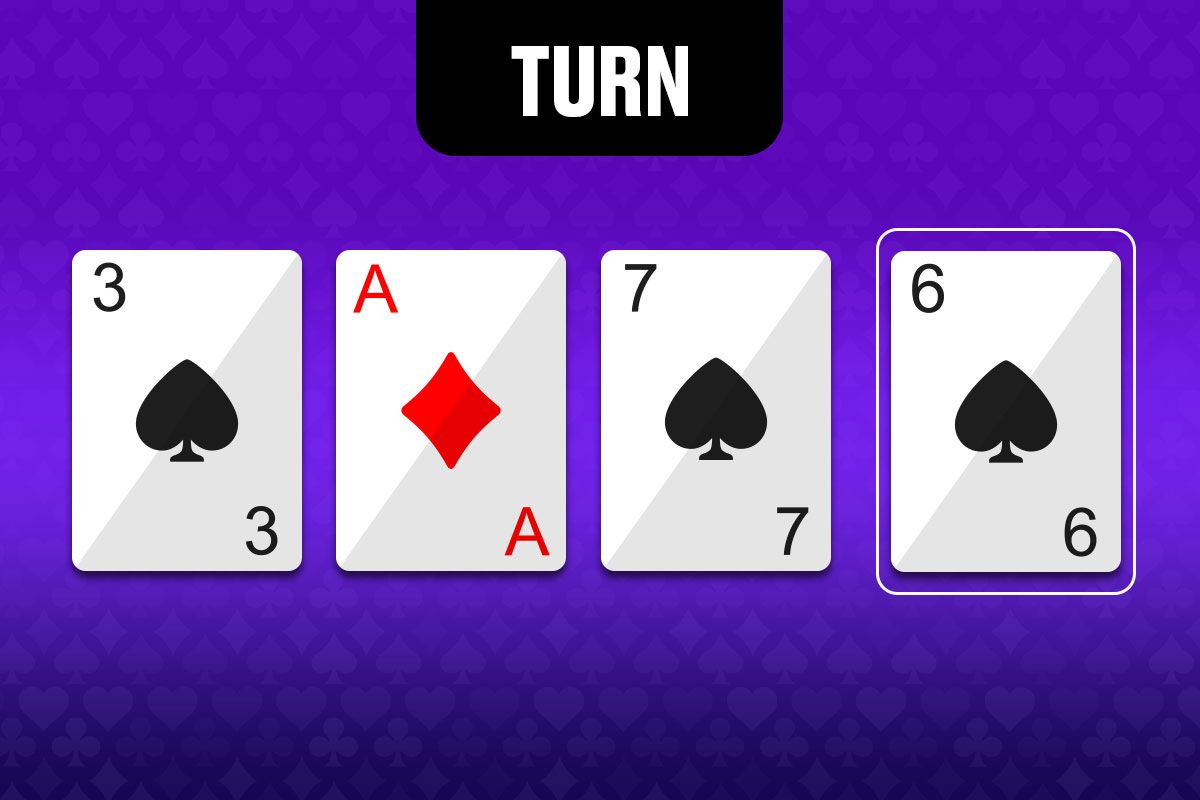
- After the second round of betting, check the "turn" card.
- The dealer burns one card.
- Then they place one card face up next to the flop, which is called the turn or fourth street.
- To determine if you want to bet, call, or raise in poker, look at all the cards on the table as well as the cards in your hand.
- At this stage, your game may enable you to switch cards, but this is not common in professional games.
- Consider the possible hands of the other players as you examine the cards.
- Let us say, that all four cards on the table are spades, for example, any player holding a spade will have a flush, which implies they have five cards from the same playing card suit.
- In the same way, if the cards on the table are 5,6,7, 8, anyone who has a 4 or 9 will have a straight.
- If you have nothing decent in your hand, but the cards on the table make for an easy winning hand, you should fold because another player is likely to have a winning card.
Rule 7: Examine the River

- Examine the "river" card before deciding which hand to play.
- After you “burn” the top card on the deck, the dealer will place one final card face up next to the "turn" card. The "river" is the name of the final card.
- To determine the best five-card hand, examine both your hand and the community cards.
- Then decide whether to bet, call, or fold in poker.
Tip: When you have good cards that are of the same suit or you have at least one pair, it is alright to bet aggressively since this will force players to assume you have a good hand. The pot also increases with this tactic. There are high chances that the rest of the players will back down. But keep an eye out for players who match your bets.
Rule 8: Showdown

- In the final "showdown," reveal each player's hand clockwise.
- After each player calls, folds, or stakes in the previous round, the players remaining in the game will participate in the "showdown".
- All players participating will show their cards face up, starting to the left of the dealer.
- Then everyone looks at the hands that have been handed over to discover who has the best hand to win the pot.
- If there is a tie, the pot is shared between the players who have a tie.
- You will not have to show your cards if you fold your hand.
- There are 5 cards on the table and 2 cards in your hand in Texas Hold'em. These 7 cards can be used to make any 5-card combination.
- The cards that are left are not counted.
- This is referred to as "playing the board" if you simply wish to play the cards on the table.
- However, because it is a choice that everyone has, it may not be the greatest one.
-
Strategy and Betting
When you are learning how to play poker game, the rules related to strategy and betting are important.
-
Calculate The Risks Associated with Your Starting Hand
Best Starting Hands

Worst Starting Hands
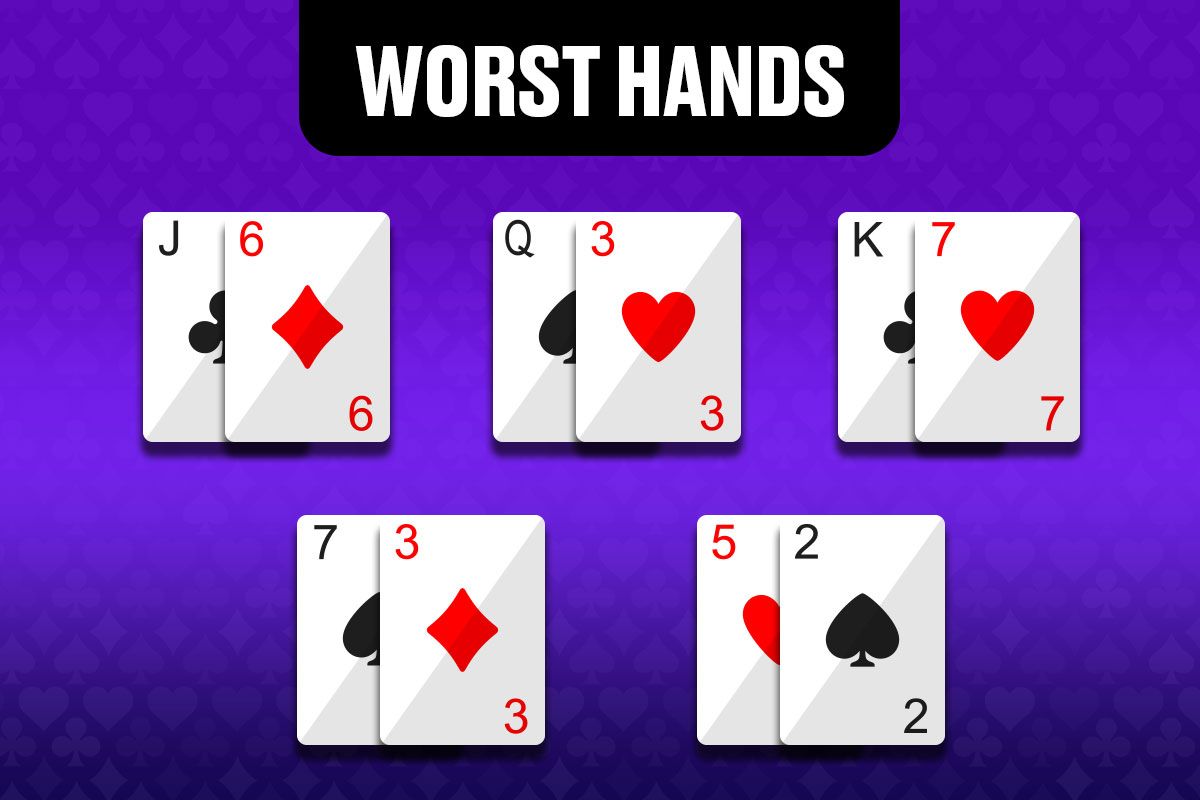
- Examine your cards to see what you have.
- Look for a pair, two consecutive numbers, cards from the same card suit, or face cards that could be useful.
- Then determine whether it is worth it to place a wager to see what the community cards are.
- When you have a pair, face cards, or aces in your hand, you should nearly always raise.
- Strong hands include an ace and a king or an ace and a queen. If you have these hands, you should bet before the flop to increase the pot's value.
- If you do not get the card you need, you can either bluff or fold.
- Know that a bad beat can be turned around with good bluffing abilities and a little luck.
1. Betting Starts in Clockwise Direction
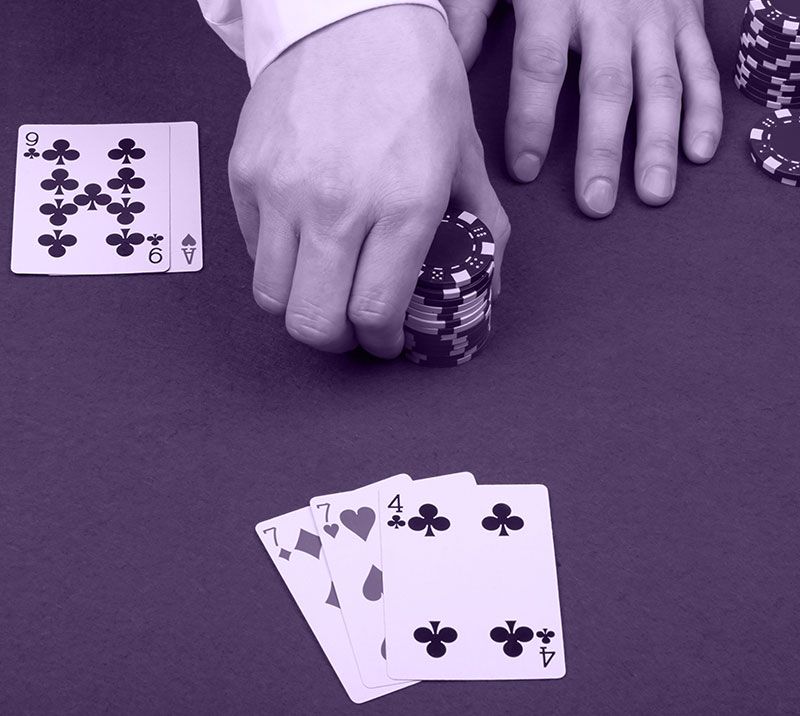
- The betting begins to the left of the big blind in the first round.
- Bets are placed in a clockwise direction in poker.
- Betting starts with the player to the left of the dealer if you are playing a game with an ante instead of a blind.
2. Call the Poker Hand if Necessary
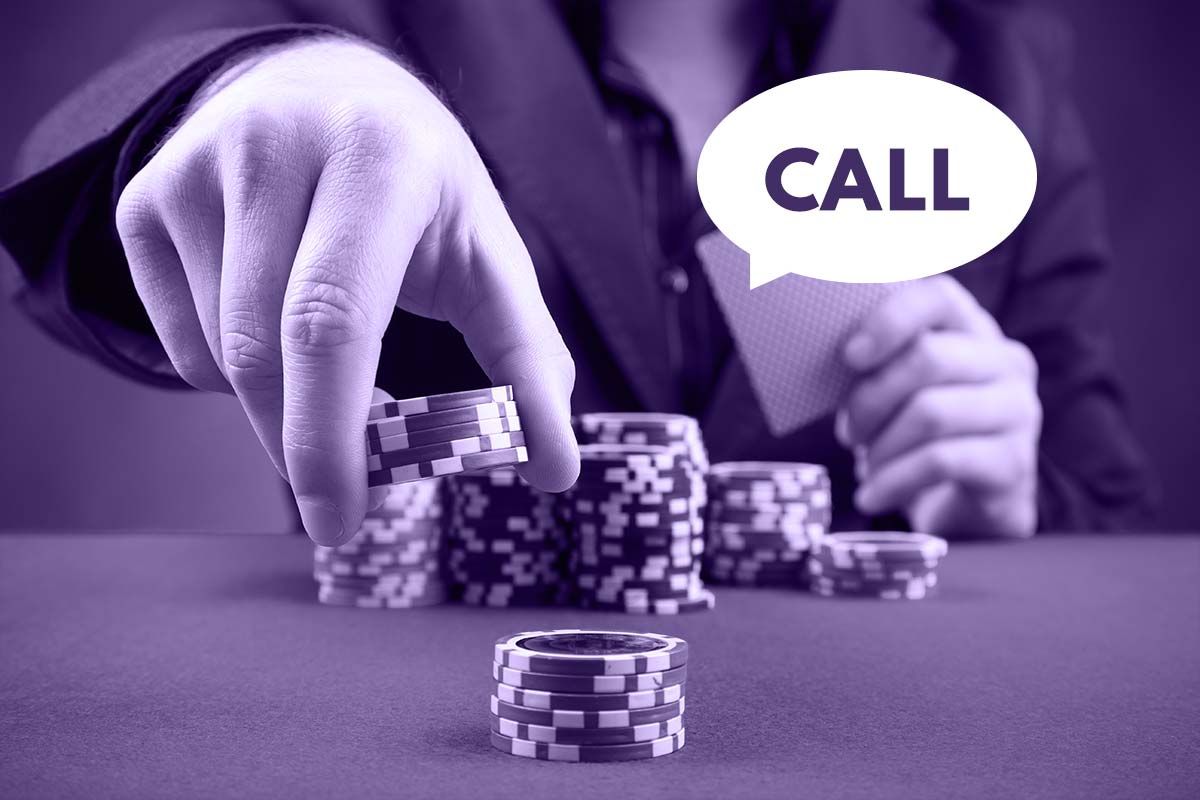
- If you want to stay in but do not have great hands, call the bet.
- This indicates that you wish to stay in the game but not increase your table stake.
- When you call in poker, add your chips or money to the pot to match the previous player's bet.
3. Raise The Bet for Good Poker Hands

- If you have a strong hand, raise your bet.
- Tell the other players you wish to raise the bet when it comes to you.
- Then, declare your bet and place your money or chips into the pot and end your turn.
- For example, you can say, “I raise the bet to $40”.
- Please note that a bet cannot be raised more than the maximum amount allowed for a game.
Bluffing: To make everyone think you have good cards; you can decide to raise the stakes. This is referred to as "bluffing in poker." It is a tactic for winning a hand despite having weak cards. You can "bluff" at any time during the game, but it is a riskier approach because your bluff could be called.
4. Fold To Avoid Major Losses
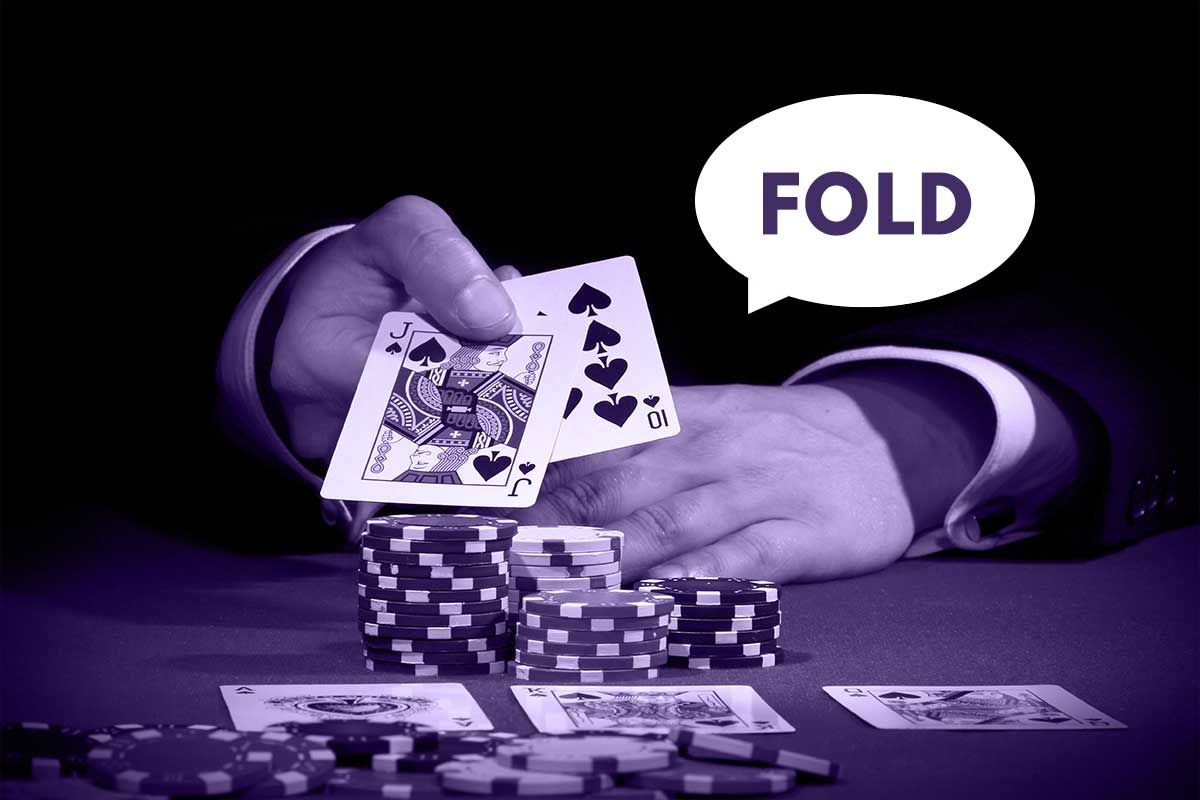
- If you have a weak hand or the current bet is too high, fold.
- This signifies the end of the poker game.
- Fold your cards by placing them face down on the table and saying, "I fold."
- Add your cards to the discard pile after that.
- When you fold during a game, do not show your cards because this will reveal which cards are no longer in play.
- This could provide some players an advantage.
- Knowing whether to fold your hand and accept a smaller loss versus holding on to it and risking a higher loss for a chance to win the pot is crucial for poker wins.
5. Only Use Money You are Willing to Lose When You Play

- When you are first starting, you should never risk more than you are willing to lose.
- Do not add to your bankroll during the game, and do not go back in after losing all of your money.
- Before you play another game, be sure you are comfortable losing that amount again.
- As a general guideline, you should be able to comfortably lose 200 bets at the maximum limit.
- So, if the maximum stake is $5, your bankroll should be $1000, and you should stop there.
- If you want to get serious about poker, keep track of your wins and losses.
- This will assist you in determining whether you are winning or losing over time.
- To stay out of legal difficulties, keep track of your gaming earnings and pay taxes on them.
6. Learn To Recognize Poker Habits and Poker Tells

In poker, it is perhaps even more crucial to play your opponents than it is to play your cards. This is a more complex component of the game, but it is always a good idea to be mindful of your tells.
- Keep an eye out for betting tendencies like betting early, betting often with weak hands, or late in a hand as intimidation.
- Physical tells can also assist you to estimate your opponent's hand strength and keep your strategy hidden by avoiding certain patterns.
- Shallow breathing, sighing, flaring nostrils, flushing red, eyes watering, blinking, excessive swallowing, or a rising pulse in the neck or temple are all typical telltale signs.
- A hand over the mouth is used to hide a smile, whereas a hand over the eyes is used to reveal a smile.
- A hand over the lips usually hides a smile, whereas shaking hands show uneasiness.
- When the flop arrives, if a player looks at his or her chips, they most likely hold a powerful hand.
- A mediocre player who stares you down to impress you is most likely poker bluffing.
7. Determine Which Players Are Conservative and Which Are Aggressive
| Style | Tag | Lag | Rock | Maniac |
| Characteristics | Tight pre-flop, Aggressive post-flop. | Loose pre-flop, Aggressive post-flop. | Very tight pre-flop, only committing post-flop with nutted hands. | Hyper aggressive both pre-flop and post-flop. |
| Pros | Carries the best skill to profit ratio in most cases. | Can potentially make even more money TAGs. | The easiest way to make a profit in poker. | Very tough to play against super exciting styles. |
| Cons | Less exciting than playing LAG. | Requires significantly more skill than playing TAG. | Somewhat boring. Doesn't make as much money as TAGs or LAGs. | Enormously high skill levels are required to make a profit consistently. |
- Determining which players are conservative and which are aggressive will make it easier for you to figure out players' betting tendencies and read them.
- Those who fold early, obviously only sticking in a hand when their cards are good, can detect if players are more conservative.
- Extremely cautious players may not lose as much money, but they will be quickly identified by more experienced players.
- They are easily bluffed into folding because they avoid high betting.
- Risk-takers and aggressive players frequently stake large amounts early in a hand before observing how the other players react to their cards.
- Act Like a Poker Pro
Acting like a poker pro is significant when you learn to play poker online. Poker is a casino game of player intimidation and players must use sharp mental skills to win the game.
-
Play Poker and Watch Others Play Poker to Act Like a Pro

- To develop faster poker instincts, practice and observe others play.
- The more you play and watch, the better you will get.
- Because each poker game is unique, it is more necessary to have solid instincts than to memorize and implement complicated strategies.
- Observe experienced players and consider how you would react if you were in their shoes.
- Then, to develop your instincts, observe how experienced players react.
- Consider how successful you would have been if you had been playing and behaved the way you did.
- Would you have won or lost if you could go back in time?
- Then think about how you may enhance your strategy in the future.
1. How To Shuffle Cards Like a Pro
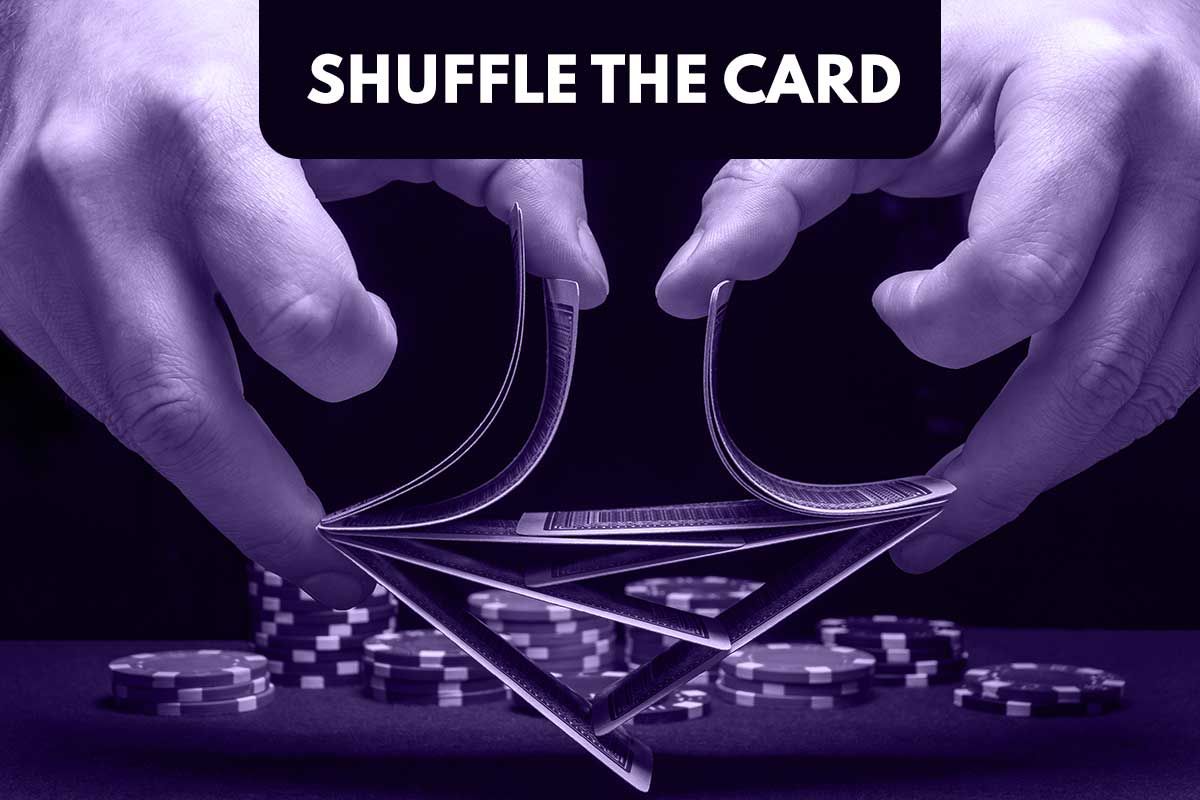
- Before dealing the cards, shuffle them and cut the deck.
- To make the game fairer, the cards are shuffled.
- Split the deck into two stacks for a basic shuffle.
- Then, in each hand, hold a stack close together and face each other.
- To combine the deck, use your thumbs to flick through the cards.
- After the cards have been shuffled, have someone other than the dealer split the deck into two stacks and place the bottom stack on top.
- Make multiple shuffles to ensure that the cards are evenly distributed.
- If you want, you can cut the deck more than once.
- Shuffling is usually done by the dealer, and bets are placed last, which is known as the "button" position.
- You will pass the dealer/button position to the next player on the left after each hand.
- The dealer location will still rotate clockwise around the table, even if the dealer is always the same person, as in a casino.
2. Check Your Cards Like a Pro
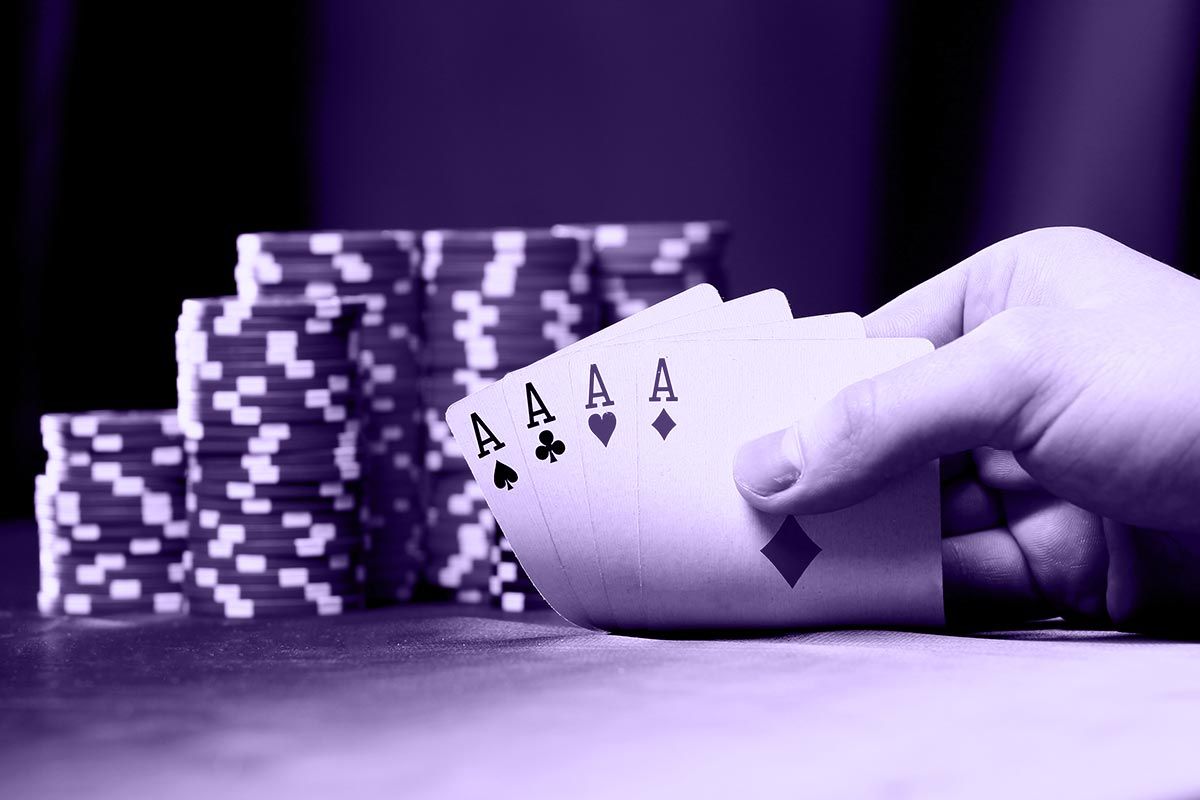
- You can check if you do not want to bet or tap two fingers on the table twice to bet.
- If you are the first to bet or if all those who have already bet have checked, you can check.
- When it is your turn at the start of a new hand, you can say "check" to indicate that you do not want to bet at that time.
- Instead, you allow unlocking the door to the next player.
- If you say "check", it signifies you are sticking with the bets you put into the pot during this hand and would not put any more in until someone else raises during their turn.
- If another player raises on that hand, neither you nor anyone else can say "check" or maintain their check.
- When the action comes back to you, you must either match the bet, that is call the bet, or raise the previous bet, or fold your poker hand.
3. How to Open a Bet Like a Pro

- If a stake has not been put yet and you wish to start betting, say "I open."
- You could, for example, raise the ante by $1 or at least the agreed-upon minimum increase.
- If you do not want to open, take turns opening until someone else does or until all players have checked.
- If everyone checks, you can either discard and draw 1 to 3 cards, or you can "hold pat" on the cards you have.
- If there are less than three cards left to draw, replacement cards will be drawn.
- The discards must be shuffled and added to the bottom of the draw stack.
4. How to Call a Bet Like a Pro

- If you want to bet the same as the last person, say "call."
- Making a stake equal to the previous bet or raise is known as calling.
- If the player to your right bets $5 and it is now your turn, you would say "call" or "I call" to match the bet.
- Then you would put $5 in the pot, either in chips or cash.
5. How to Raise a Bet Like a Pro

- To increase the current betting amount, you "raise." It is referred to as "sweetening the pot".
- Raise or re-raise means ending this round and starting a new one, allowing anybody else to either "call" or "raise" the amount of the last bet to stay in the game, or "fold."
- On this turn, those who have previously called can check in poker, and the hand is over unless someone re-raises.
- When it is your turn, you can raise to $40 if someone before you bet $20, and you think you have a winning hand or want to bluff.
- Do not, however, say things as I see you $20, and I will raise you $20.
- Despite its popularity in movies, this is considered sloppy table conversation.
6. How to Fold Your Hand Like a Pro
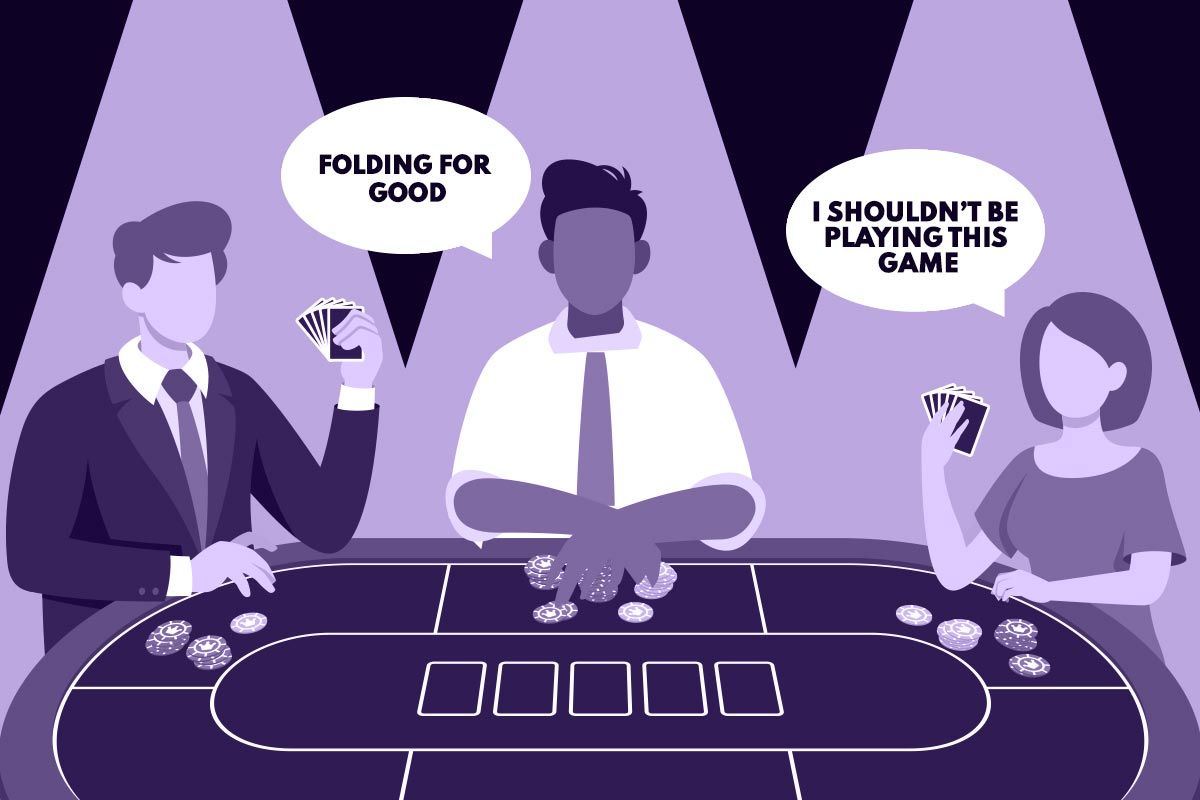
- When you are ready to end a hand, say "I fold."
- Folding means you are giving up your cards, and any bets you have made into the pot.
- If you have chips or have not reached your maximum of losses, wait to be dealt into the following hand.
- When it is your turn to fold, place your cards face down on the table and into the discard pile.
- When it is your turn poker, you can fold at any time in the hand.
Cash-In When You are Quitting
- When you want to leave the poker game, you can cash in. This entails trading poker chips for cash.
- If you still have chips but no longer wish to play poker game, take them to the banker and inform them that you are ready to pay them in.
- The banker will calculate how much money your chips are worth and then give you cash.
- After you have cashed in, you can usually go back and watch the game.
-
Learn Poker Variations
Learn the rules of the different types of poker if you really get into the game or just want to impress people with your poker expertise. Besides Texas Hold’em Poker, some other available games are:
- Straight Poker.
- 5-Card Stud.
- 7-Card Stud.
- Lowball.
- Omaha.
- Pineapple.
- Crazy Pineapple.
- 5 Card Omaha.
- 6 Card Omaha.
- Texas 6 Plus Hold’em.
- Cincinnati.
- Dr. Pepper.
We shall discuss Omaha Poker, Chinese Poker, 5 Card Omaha, 6 Card Omaha, Texas 6 Plus Hold’em in detail. Have a look at how to play poker variations.
Omaha Poker
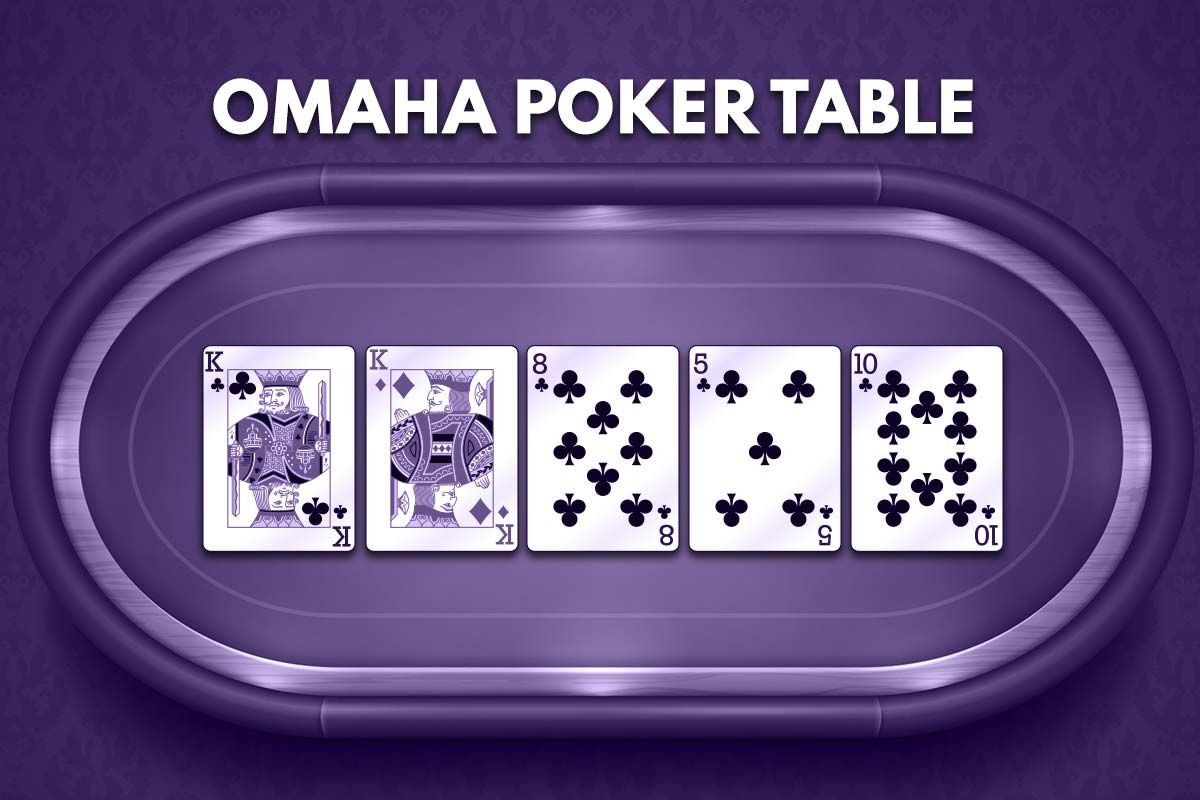
- Omaha Poker, often known as Omaha Holdem or just Omaha, is a poker game like Texas Hold'em. However, each Omaha player is dealt four cards and must create the greatest hand possible with only two of the three of the five community cards.
- Omaha poker is gaining popularity like Texas Holdem. In recent years, more online poker platforms have begun to provide this poker variation to their players, making it a globally recognized game.
- Omaha, like Texas Hold 'em, is a group card game having a flop, turn, and river, as well as betting rounds of both the games are identical. There is a limit to how much you can put in the pot as Omaha Poker is played at pot-limit, which means, you cannot bet more than the total money in the pot.
Chinese Poker
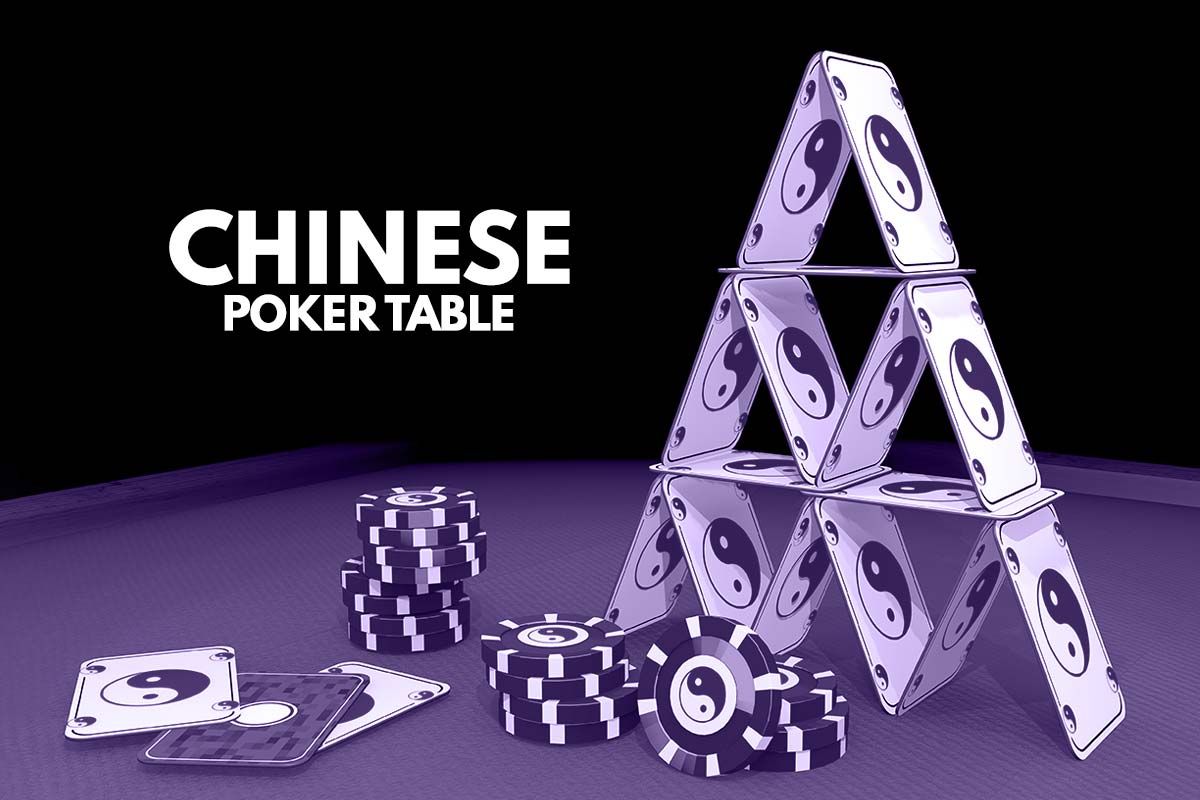
Do you have a lot of experience in poker? Do you want to test an online poker game that is not like the popular ones like Texas Hold'em, Omaha, or Stud? Then, even if you are a novice, you can try your hand at Chinese Poker online.
- Chinese poker is a version of the world's most popular card game.
- The Chinese poker game is beginner-friendly, and anyone with a basic understanding of poker charts may play it.
- Players are dealt thirteen cards and they have to arrange the cards into top, middle, and bottom hands. The top hand consists of three cards and the middle and bottom hands of five cards.
- The rule of the game is that from the thirteen cards, the top hand should be weakest, the middle hand must be medium and the bottom hand must be strongest. If this is not followed, then the player is penalized.
- The strength of all the hands is compared. For example, the top hand of one player is compared to the top hand of another player. The one whose cards are stronger wins the round.
- Before you begin playing this game, you must first gain a thorough comprehension of the poker hand rankings.
5 Card Omaha
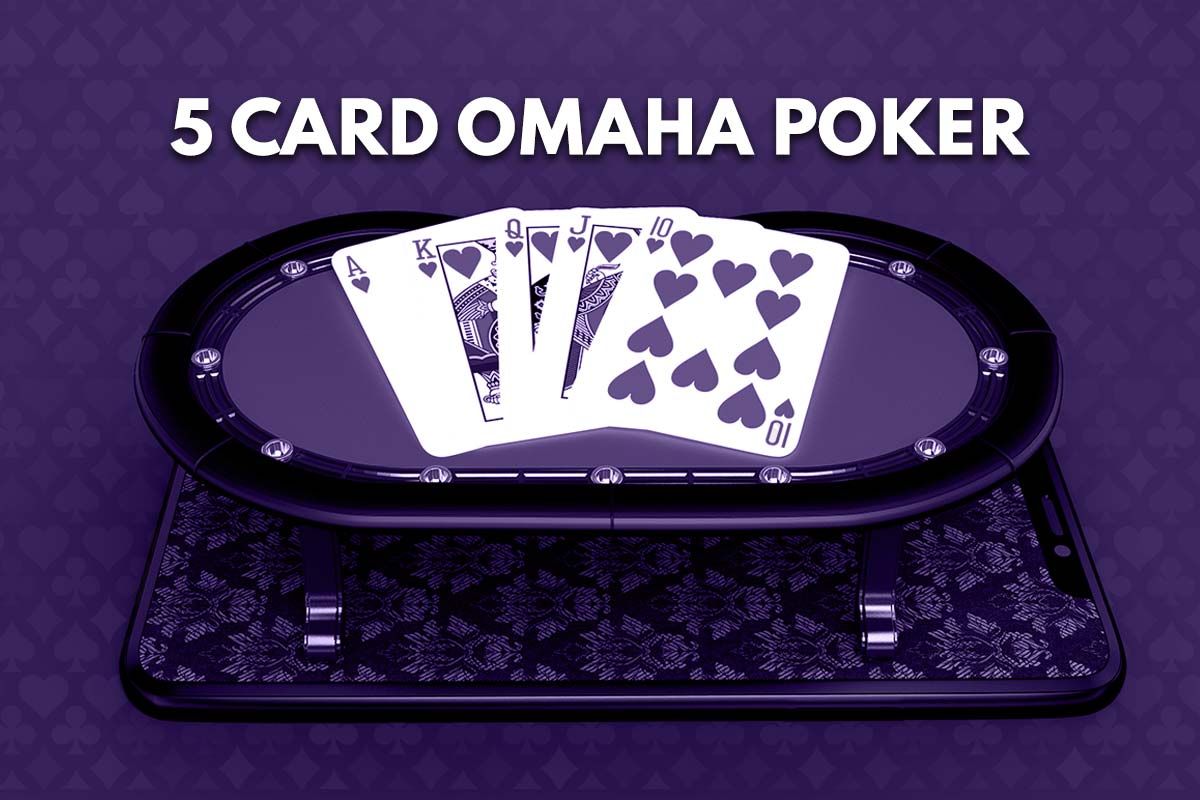
- The 5 Card Pot Limit Omaha, also known as 5 Card PLO, is one of many simple and profitable poker games. Players are given five hole cards in 5 Card PLO and the betting limit is kept at pot limit.
- It is a poker variant evolved from Texas Hold'em, the most popular game type.
6 Card Omaha Poker
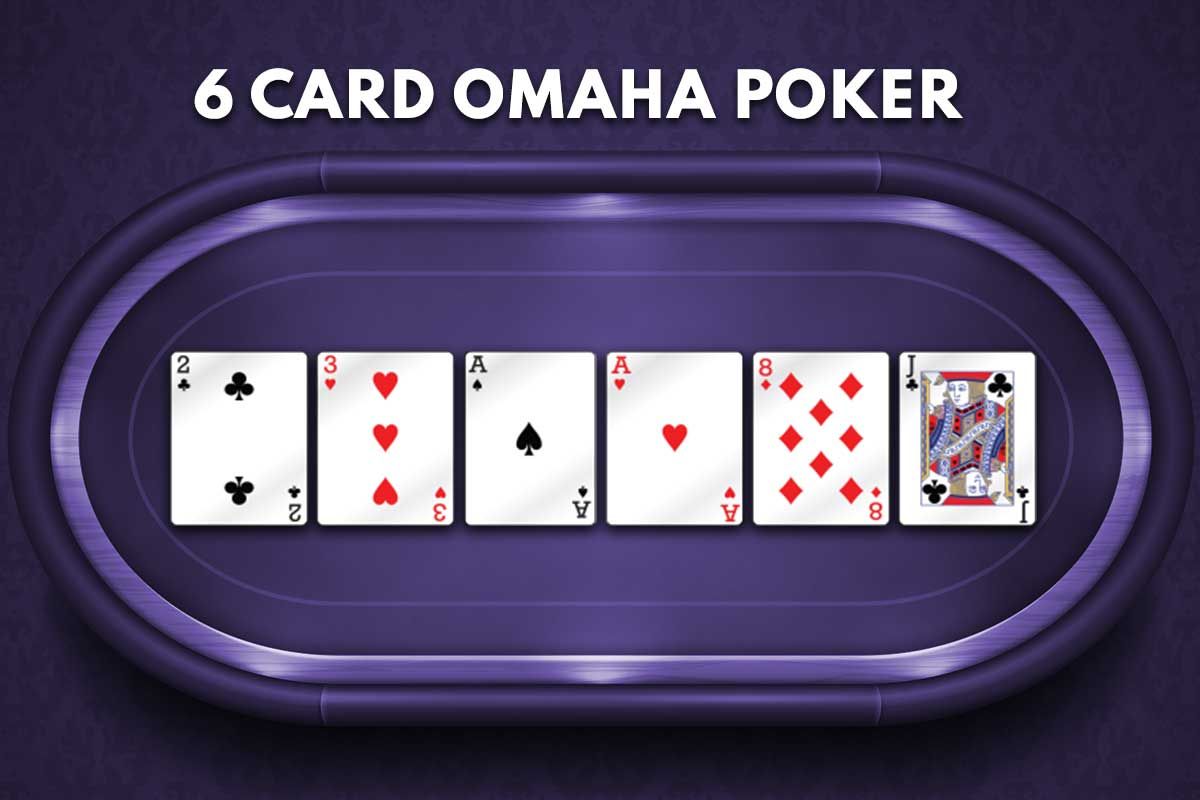
- 6 Card Omaha Poker is a variant of Omaha Hi, but instead of receiving four cards, each player receives six cards in Omaha 6.
- Like in traditional Omaha Hi, players must create their best hand using exactly two of their cards and exactly three of the five community cards given face up.
- Omaha 6 can be played by 2 to 7 players.
Texas 6 Plus Hold’em
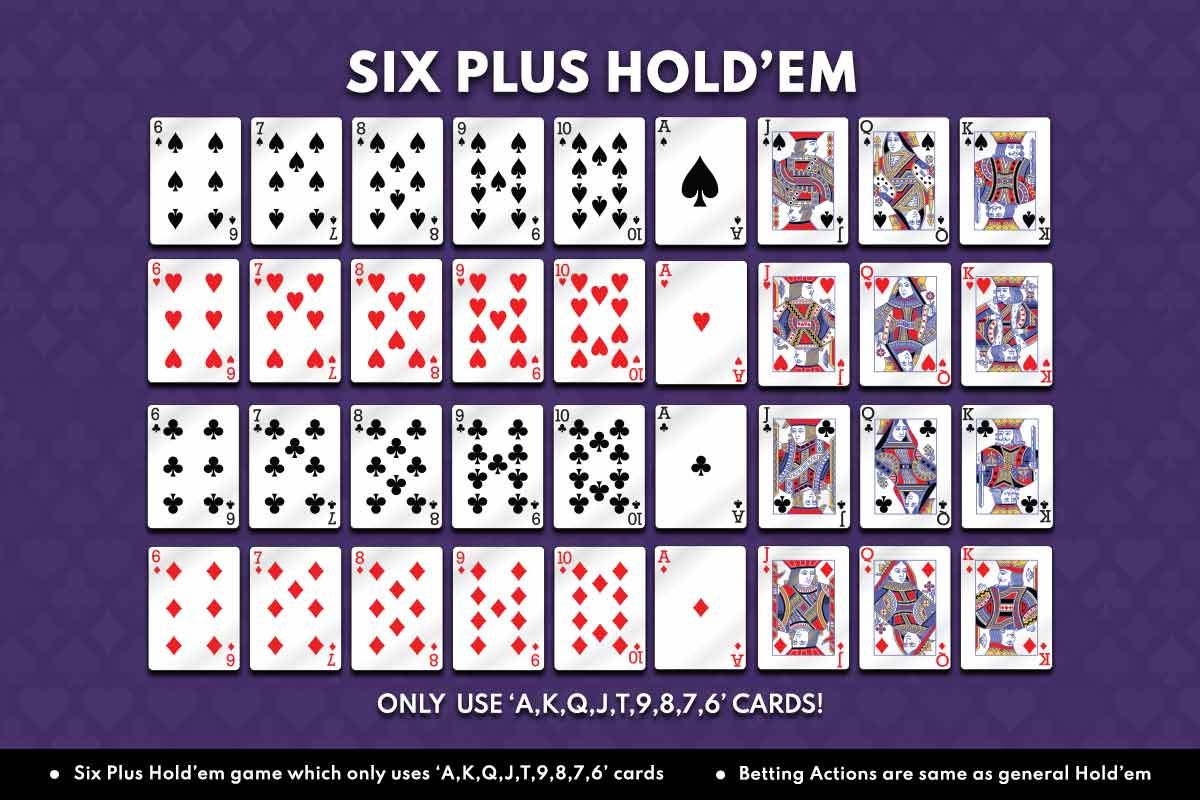
- All 6+ Hold'em games use a 36-card deck with all cards lower than a 6 that is shuffled before each hand is delivered.
- Player left of the dealer puts the Small Blind.
- A Big Blind is placed by the player to the left of the player who posted the Small Blind.
- In most cases, the Big Blind is worth twice as much as the Small Blind.
- When the dealer changes places, the blinds also rotate.
- The action starts with the person seating to the left of the button.
- Each hand is then played according to Texas Hold'em rules, with betting rounds for the Pre-flop, Flop, Turn, and River in poker.
After going through the poker rules, betting actions and strategy, how to act like a poker pro, and some poker variations, your next step should be to play poker game. A player gets better at more only with more practice and play. To play poker online, download the Spartan Poker app on your mobile phone. Use the 300% Welcome Bonus and play free poker tournaments to get your hands on poker. Go ahead and join a free texas hold’em poker tournament on the Spartan Poker app now!
Frequently Asked Questions - How to Play Poker?
Q.1) How to play poker for beginners?
You will have to play a few games with people who know how to play the game and it would be better if you went on a few online poker sites and checked out the types of games available there.
Q.2) How does poker work?
Players place stakes on the kind of hand they think they will win, and the player with the best hand wins the game.
Q.3) Is poker an easy game?
Poker is easy to play if you follow some simple poker strategies and just keep your wits about you. The key is to observe your opponents and pick the right time to make you move. It is super fun to play with friends and a lot of families in India reserve this game for the festivals when the entire family comes together to celebrate.
Q.4) Can you teach yourself to play poker?
You absolutely can teach yourself to play a poker game. When in doubt, pull the poker guide out. This should be a compilation of what are the best poker hands and poker hand rankings as well. These two things will help you navigate a game of poker. However, the best teacher will have to be experienced.
Q.5) What is the best way to learn poker?
With poker, practice and experience are the best teachers. Just like in life. A lot of people enjoy playing this game because of the nail-biting and adrenaline-pumping experience you can have with a pack of poker cards.
Q.6) Is poker good for the brain?
Poker is one of the best games for mental stimulation. You learn a lot of important practices like pacing yourself, how to read people, how to manage finances and so much more. So yes, poker is indeed good for the brain.
